
by iphindia | Jan 4, 2016 | Blog, Education, ePHM-Advance, Latest Updates

 The swine flu epidemic caused by a new strain of the influenza A (H1N1) virus became a public health problem in India in 2014 for the second time in the last decade. In 2009, it was categorised as a pandemic by the Indian government and all public health centres were advised to take strict measures to control it and prevent its recurrence in the future. However, in 2014 when it recurred, our public health system was unprepared.
The swine flu epidemic caused by a new strain of the influenza A (H1N1) virus became a public health problem in India in 2014 for the second time in the last decade. In 2009, it was categorised as a pandemic by the Indian government and all public health centres were advised to take strict measures to control it and prevent its recurrence in the future. However, in 2014 when it recurred, our public health system was unprepared.
India was one of many countries in the world that was affected by the pandemic in 2009.With 1178 deaths and more than 12,000 positive cases, the Indian health system struggled to cope with the impact. In comparison to 2009, in 2014 the total number of laboratory confirmed cases crossed the 33,000 mark and more than 2000 people died. Following 2009, the government had suggested compulsory preventive measures, which included vaccination. On enquiry, however, both the government and private hospitals did not have the vaccines in stock during the second epidemic. All the hospitals were out of stock due to the sudden increase in demand.
We conducted a study of 400 doctors, 120 nurses, and 400 people from the general population who were interviewed in the states of Delhi, Gujarat, Rajasthan, and Maharashtra, which were the areas worst affected by the epidemic. The interview questions covered topics aimed at assessing people’s knowledge of the symptoms of swine flu, the mode of infection, high risk groups, prevention, and immunization including the correct use of masks and tests.
80% of those interviewed had not even heard about the disease. When asked we got a broad range of answers on what the word “swine flu” means, ranging from the common cold to HIV/AIDS, which showed the sheer lack of knowledge about the condition. The data collected from doctors revealed that only 77.2% of doctors and only 71.4% of the nurses had knowledge about how to identify swine flu suspects.
Even simple questions such as asking about the correct way of wearing protective masks, which was advised by the government as a preventive measure revealed that close to 75% doctors, 74% nurses, and 89.25% of the general population were not able to answer it correctly.
As a nascent public health researcher, it was an eye opener. It helped me to understand the level of the seriousness of both the government and the private health sector when it comes to public health issues.
During this study, we observed that doctors do not always keep sufficiently up to date about new medicines and vaccinations available in the market, with 34.8% doctors unaware about high-risk groups while only 4% knew about the prevalence rate about this disease.
In my opinion this is just a manifestation of a deeper issue. On one hand high population density, especially in cities make us extremely susceptible to outbreaks and the spread of infectious diseases. On the other hand, severe unpreparedness makes it extremely difficult to curb the spread once such an event occurs. With a large and unregulated private sector where more than 70% of the population access healthcare, public health problems remain neglected. There is an overall lack of knowledge of the importance of being prepared for an event such as this. Even in public health systems, a lack of adequate infrastructure, insufficient resource supply, and inadequate monitoring leave us easily prone to such attacks.
The only way to address these issues is to spread awareness from the primary level and to make public health a part of general education. In addition to this, understanding the needs of the population, being prepared for such outbreaks with an effective public health system, and having regular audits to ensure preparedness, including following international guidelines, is essential to ensure that history doesn’t repeat itself when it comes to infections like swine flu.
Anu Sharma was a student of e-learning course in Public Health Management(ePHM) conducted by Institute of Public Health, Bangalore, India.
Disclaimer: IPH blogs provide a platform for ePHM students to share their reflections on different public health topics. The views expressed here are solely those of the authors and not necessarily represent the views of IPH.

by iphindia | Dec 3, 2015 | ePHM-Advance, Latest Updates, post_slider
Live interaction of Student-teacher are very essential for engagement of students, especially, in an e-learning environment. Online learning is most effective when courses are led by a live teacher and students can interact with that teacher in real-time. The mere presence and active involvement of an instructor motivates students and helps them navigate challenging content, inspiring them to improve their performance. During such interactions, instructors bring in knowledge beyond the curriculum. Keeping this in mind, we organized a live hangout session with Prashanth, our subject matter expert and students of ePHM 2015. The students and Prashanth discussed on various topics like systems thinking, national health programmes, private sector regulation, etc. Here is a video of their interaction.

by iphindia | Dec 2, 2015 | Blog, Internship, Latest Updates

The honours programme of Maastricht University has a cooperation with the Institute of Public Health(IPH) in India. We, a group of 9 students, are doing a research for the Institute of Public Health about the human resources for health in India. We were invited by IPH at the end of our summer holiday and experienced the health care system for two weeks by ourselves. Our program consisted of several field visits in Tumkur and in Bangalore, and a visit to Gudalur, where a program for the Adivasi is made that contains their rights, education and health.
Our program started on Monday the 17th of August with an introduction about our program during our stay at the IPH. On Tuesday we went to Tumkur for two days. Here we visited the government/public health facilities: the sub centre, primary healthcare centre, community healthcare centre and the district hospital. We also visited the tuberculosis centre of Tumkur and a private hospital. Because our project is about the human resources for health in India we also focus on the distribution of the doctors in not only the rural and urban areas, but also in public and private settings. For us it was hard to imagine why doctors would prefer to work in the private sector. After visiting the different facilities (district/public hospital and private hospital) it was more clear to us why doctors choose to work in the private hospital, especially because we also had the opportunity to talk to d octors in both settings. Besides this, it was also hard for us to imagine why a lot of people visit the private sector instead of the public (which is for free).
octors in both settings. Besides this, it was also hard for us to imagine why a lot of people visit the private sector instead of the public (which is for free).
After our visit, it is clear that the private sector is better and as long as patients have money to pay the private sector, they will go to the private. After Tumkur, we had a visit in a field office in Bangalore itself on Thursday. Here we saw another primary healthcare centre and a community healthcare centre. Unfortunately, we didn’t had the opportunity here to talk with healthcare workers in this field. On Friday we had debriefing day and we told Dr. Deva about the experiences we had during our first week. Also we gave a presentation about our work back home in Maastricht and updated Dr. Deva about our progress so far. On Sunday we left Bangalore to go to Gudalur. This was a different kind of experience, one that I didn’t expected to have during our stay at the IPH. In Gudalur a project for the Adivasi people was started about 25 years ago.
The incentive of this program was to give the Adivasi people their rights back: bring them back their land/forest and learn them about their rights and how to maintain their rights and their land. Adivasi are the poorest people of India, and giving them their land back didn’t solve all their problems The project extended, and included the strengthening of a wealthy health system and a good educational system. Nowadays the Adivasi have their own school, the best in the area, and an own hospital, which is also very good. The hospital and the school are managed by almost only Adivasi people. There are still a few persons from outside that help the Adivasi maintaining their community, but their goal is (as it was 25 years ago) to strengthen the Adivasi people to do this themselves. I really like the philosophy the people in Gudalur have and I think their approach of helping the Adivasi people is one that should be used more often and can be an example in other situations. I’ve learned a lot during those 2 weeks at the IPH and hope I will use these experiences in my later life when I myself operate as a doctor. It’s amazing to see what good work people do to make other people’s lives better and I really have a lot of respect for them.
Lotte Boonen from Maastricht University was an intern at Institute of Public Health, Bangalore, India.
Disclaimer: IPH blogs provide a platform for interns to share their reflections on different public health topics. The views expressed here are solely those of the authors and not necessarily represent the views of IPH.

by iphindia | Nov 23, 2015 | Blog, Internship, Latest Updates
 In the time span from the 17th of August to the 28th August, we had the chance to see some of the institutions of the Indian health system and talk to some of the important stakeholders. In the subsequent informal report, I will review my experiences. The report will be rather opinion based than evidence based, so I am aware that some opinions might be too critical as they are mainly based on the impression I got in my two weeks visiting Indian health care facilities. The report is divided into two chapters, in which the first chapter describes my experiences and opinions about the first week and the second part is dedicated to the days spent in Gudalur.
In the time span from the 17th of August to the 28th August, we had the chance to see some of the institutions of the Indian health system and talk to some of the important stakeholders. In the subsequent informal report, I will review my experiences. The report will be rather opinion based than evidence based, so I am aware that some opinions might be too critical as they are mainly based on the impression I got in my two weeks visiting Indian health care facilities. The report is divided into two chapters, in which the first chapter describes my experiences and opinions about the first week and the second part is dedicated to the days spent in Gudalur.
1. Field visits to Tumkur and KG Halli-Experiencing rural and urban health institutions
Beginning our field visits, we joined a meeting of the Accredited Social Health Activists (ASHAs). Since the ASHAs work with the communities very closely and are in constant communication with the people of the communities, their help with bridging the gap between the population and the health facilities seems to be crucial. However, we were told that incentives are often a problem for the ASHAs, since the system of paying them does not seem to be transparent and was criticised by the district health officer, who represented the interests of the ASHAs to us. An interesting moment with the DHO was his genuine surprise with the fact that sex education is part of the high school curriculum in European countries. Specifically students learning to put on a condom by practising with a banana seemed amusing to him. As he translated his exchange with us to the ASHAs being present at the meeting, loud laughter erupted from the crowd. I was surprised that sex still seems to be a topic, which people try to avoid as much as possible. Especially in schools, I think a healthy, open attitude towards sex is not only desirable, but might also decrease the burden of HIV/AIDS.
|
 | |
After we visited the ASHAs, we continued to the nearby Community Health Centre (CHC or Taluka hospital). We were told that the CHC in Tumkur is one of the best (government) hospitals in the region. When we came there (around 2 pm), it seemed very empty. The gynaecologist, who showed us around, explained that this was due to lunch time. Nevertheless, I thought the doctor and the employees seemed very relaxed, which contradicted my expectations of overworked health workers and a shortage in human resources. For us it was extremely interesting to talk to the stakeholders (doctors, DHOs etc.) for such a long time, but it was also very surprising to me, as I had assumed that their daily routine is too busy to allow such extensive exchanges. A very positive aspect of the CHC in Tumkur was the fact that they kept patient records. I think the lack of patient records in the other facilities and in India in general, was one of the points, which irritated me the most. I think it irritates me so much, because of the imbalance of the limited effort of keeping patient records on the on hand and tremendous benefits that I would expect to result from having more data on the patients’ health (cost-benefit considerations). I think the quality of care could be improved, because medical malpractice would be decreased simply due to the fact that doctors would have more information to base their decision upon. Besides the more obvious improvement of quality of care, I would expect an improvement in the situation for the workforce, as doctors supposedly would have to spend less resources (time, effort ect.) on finding out which symptoms the patients has and which treatments were already tried.
Next, we visited the primary health centre. Again, my first impression was that it was not busy. We were told that the last delivery had taken place 6 months ago as people prefer to have their children born in the CHC. There was no doctor available at the time of our arrival. In the first place, I was not surprised that there was no doctor present because there were no patients to be treated. Later, I was challenged on this way of reasoning, and told that it would be busier if a doctor was present. Apparently one doctor is responsible for more than one CHC and can thus not be present at all of them at the same time. I think for most medicine students and doctors beginning their careers, these PHCs are not a desirable working environment as only minor illnesses can be treated and no specialisation can take place working only in a PHC. Maybe, it would be better to rotate duty in the PHC and have doctors work there for 1 day in the week (Doctors who usually work in the cities. They would still work in the city and be able to specialize but come to the rural area PHC for 1 or 2 days). Talking to some doctors, the duty in the PHC for several years is a major argument against working in the government health sector. Nevertheless, the PHCs seems to be useful (in theory) to alleviate some of the burden that the CHCs and district hospitals have to carry otherwise. The sub-centre, which we visited afterwards also seems like an useful idea and there are no further comments to be made on the importance of these sub-centres and their close collaboration with the ASHAs and the community.
Our next visit was dedicated to the first private hospital (Dr. Thammaiah hospital). Considering all the facilities reviewed, the private hospital seemed to be closest to the European standard. As we entered, the facility seemed clean and organized. The doctor, who again sat down with us and talked about our impressions on the differences between the private and government sector, was very critical of the government sector. We were especially interested in his reasons for choosing the private sector instead of working in a government hospital. For him, it was mainly a better opportunity to grow as a doctor and the fact that he hadn’t received a postgraduate seat in India. He went to Russia to do his postgraduate and when he returned, he did not expect the freedom he felt he needed to be provided by the government sector. The doctor stressed the financial pressure that running your own hospital entails. This was interesting to me as I usually consider doctors to be medical professionals primarily, but for him issues such as cutting the overhead costs of the hospital and pricing strategies seemed to be of paramount importance as well. Further, it was interesting that he was the only resident doctor, a situation which seems suboptimal for a hospital of this size. As he took us to the roof of the hospital, we were shown the dorms of the nurses. I am not sure of the doctor’s staffing strategy, but it seemed to me as a measure to cut the cost by being able to pay the nurses less (because they were provided an accommodation) and at the same time having them close to the patients at night. Another observation (this might also be a prejudice) was that the people working in the private institutions (private hospital and Adivasi hospital) seemed to be more dedicated than those in the government facilities. As we asked about working hours, the doctor from the private hospitals told us that he was available all the time if necessary. I also had the impression that the employees of the private institutions had a stronger sense of responsibility and ownership of their work. As we left the Dr. Thammaiah hospital, the hallway was crowded again and the doctor indicated that he had to go back to work.
As a comparison to the private hospital, we saw the district hospital next. After we just had gotten such a positive impression of the private hospital, the visit to the district hospital brought us back to the Indian reality. This reality accounts exclusively for people who cannot afford the private facilities. Even employees of the IPH, who work for an NGO with the vision “to create an equitable, integrated, decentralized, responsive and participatory health system within a just and empowered society” told us that they would prefer a private hospital if they happened to become ill. The visit to the district hospital exactly matched my expectations of what I thought a hospital in India might look like. It was crowded, seemed unorganized, and tissues soaked with blood lying on the floor did not strengthen my confidence in the state of hygiene of the hospital. I also thought the hospital was understaffed and the facilities did not seem optimal. Considering the title of our report “shortage of human resources in health”, I thought in this moment that there is an overall shortage of resources at least for the government health sector. After gaining these unpleasant insights, we met a proud doctor who was willing to show us his department and answer our questions. Again, I was surprised by the differences within the district hospital, as his department seemed more progressive compared to the other departments we had seen before in the same hospital. But what was even more impressive than the differences in standards between departments of the same hospital, was the admirable attitude of the doctor who showed us around. Similarly to the doctor in the private hospital, we asked him for his motivation to work in the government sector. For my part, I was very curious of his answer, because if I had the choice myself, I couldn’t imagine choosing to work in such a poor working environment. His answer was that he had the feeling of owing the state as he considered himself a beneficiary of the system. He stressed the point that his family background was not the wealthiest one and his sister was born in the district hospital he now works in. He seemed very convinced that he could deliver a similar quality of care compared to his private counterparts, who have more resources and better access to high quality medical equipment. While I admire his pride and commitment to work in the government sector, I doubt that a sufficient level of quality of care can be delivered. The visit in general made more obvious to me that in India, there is a profound disparity in health care with regard to the socioeconomic status of an individual.

Another government facility we visited was the district tuberculosis control unit. Tuberculosis is curable and a country should be able to minimize the adverse effects it leads to on a population basis. Yet, in India, there are problems with the implementation of DOTS, which is the recommended TB control strategy by the WHO. The lack of compliance by patients and the lack of trust in the government pharmaceuticals lead to an increasing burden of MDR-TB, which is even more difficult to treat than TB and has a low chance of successful treatment. The inability to contain TB efficiently, together with the facilities we saw at the TB control unit (e.g. the X-Ray apparatus was 50 years old and donated by UNICEF), creates the impression that India is still a developing country with regard to health and very little could be observed of India’s applauded emerging economy. The visit to the TB control centre concluded our visit to the rural health facilities and we went on to visit a PHC in KG Halli.

An employee from IPH showed us around and took us back to the IPH office as we engaged in a conversation with her. She told us about the patient records that they were trying to get the patients to use. I mentioned my opinion about patient records in India above, so the fact that the IPH employee reported of such a low compliance in the community and at the hospitals for their intervention frustrated me immensely. I gained further insight about the fact that financial means are more important than health to the average person in KG Halli. While this is understandable, given the need for money to survive on a day to day basis, this attitude mixed with the rise in non-communicable diseases is a very concerning one.
As this was the last field visit of our first week an interim conclusion could be drawn. Firstly, there is a large range regarding quality of care that people can receive. While some institutions manage to deliver care, which is comparable to the European standard, other institutions suffer from resource constraints and do not seem to be able to deliver adequate care. Secondly, whether one is able to receive adequate treatment, depends merely on the individuals ability to pay. Finally, while a lot of stakeholders seem to have a good understanding of what the problems in the government sector are and how they could be tackled, the backing from politics is lacking.
2. Visiting the Adivasi in Gudalur
Before visiting the Adivasi and their hospital in Gudalur, I was excited to see how people live without being part of the mainstream society. We had the chance to extensively learn about the culture of the Adivasi. Most interesting to me is their missing sense of individual property. Not having had this sense and not having mainstream education, it is no wonder that the Adivasi have been deprived of their land. Finding out more about their society challenged me to think critically about what I consider my own society – mainstream society. By depriving the Adivasi of their basis of existence for our own interests, we show a low degree of tolerance and a high degree of egoism. One might argue that we are trying to help “developing” the Adivasi community; however we cannot be sure that the way our society develops is necessarily a positive one, and thus forcing our way of development on other societies seems irrational and unjust. While apparently we do not allow for a parallel society to live without contact points to mainstream society, the least we can do is be solidary towards the Adivasi and help them in their struggle to adapt to our society. In my opinion, the struggle of the Adivasi is not about culture primarily, but mainly a struggle for survival. Again, one might argue that it is the self-responsibility of the Adivasi to overcome the challenges, but arguing in this way neglects the responsibility we bear for putting them up to these challenges in the first place. These relatively critical thoughts are accompanied, however, with feelings of pride that there are people from mainstream society who are willing to help the Adivasi and make a personal sacrifice to help them. I think the situation is a rather difficult one, because there is a balance to be achieved between trying to help the Adivasi and trying to empower them at the same time. I see empowerment as a critical point. For example, if you empower the Adivasi to do what you think will help them to survive: Is this genuine empowerment or rather dictating what they should do disguised as empowerment?
I think in the long run, if we do not provide a safe environment for the Adivasi to live their life as they please, they will have to continuously give up more of their culture to finally assimilate to mainstream society. To me, Adivasi culture is not mainly about dancing and singing, but what I mean when I say culture is the way their egalitarian society is structured, the relations between men and women and other social topics. In an effort to finish my report on a positive note, I want to mention the positive impression that I had when we visited some tribes in their hill villages. The magnificent nature combined with the pleasant atmosphere in the villages further deepened my belief that the Adivasi culture and way of living in general need to be preserved.
Finally, I would like to express my gratitude to the team of IPH. You helped me gain meaningful insight and without your access to the places we visited, I would not have been able to gain such an insight about the different aspects of Indian society!
Lion Lehma from Maastricht University was an intern at Institute of Public Health, Bangalore, India.
Disclaimer: IPH blogs provide a platform for interns to share their reflections on different public health topics. The views expressed here are solely those of the authors and not necessarily represent the views of IPH.

by iphindia | Nov 23, 2015 | Blog, Internship, Latest Updates

 Although we are already back in the Netherlands for one and a half week, I am still not totally used to it: Dutch food, no honking on the road and a lot of rain instead of the Indian sun. When people ask what the most impressive thing I have done was, it is difficult to choose between the many things we have done and we have learned. How can people really understand the culture and the Indian life, while they have not experienced it themselves? Watching back the pictures we have made while visiting the hospitals, the ASHA meeting, the tuberculosis centrum, the field visits and the Adivishi people, makes me realise that we were really blessed to have had this opportunity to see all those things. The most striking thing for me was the seeming discrepancy: on one hand the ‘hopelessness’ of the Indian healthcare, visible in the unhygienic operating theatres, the non-availability of doctors in the rural areas, and the lack of knowledge among the local population and on the other hand the hopefulness with the great opportunities that India is facing in among others the technology.
Although we are already back in the Netherlands for one and a half week, I am still not totally used to it: Dutch food, no honking on the road and a lot of rain instead of the Indian sun. When people ask what the most impressive thing I have done was, it is difficult to choose between the many things we have done and we have learned. How can people really understand the culture and the Indian life, while they have not experienced it themselves? Watching back the pictures we have made while visiting the hospitals, the ASHA meeting, the tuberculosis centrum, the field visits and the Adivishi people, makes me realise that we were really blessed to have had this opportunity to see all those things. The most striking thing for me was the seeming discrepancy: on one hand the ‘hopelessness’ of the Indian healthcare, visible in the unhygienic operating theatres, the non-availability of doctors in the rural areas, and the lack of knowledge among the local population and on the other hand the hopefulness with the great opportunities that India is facing in among others the technology.
While a lot of people are motivated to work for the health of the population, the structure of the healthcare system, the corruption and the disbelief in the public care seems to work against. The inequality between private and public hospitals is large, the role of culture, which has especially been visualised during the visit at the Adivashi population, is huge and the role of political decisions is to a great extent determinative. Solving the distribution problem it not as simple as it sounds. For me, it became clear why most people in the population as well as physician give preference to the private sector. Providing a solution is not just solving one problem, is it a step-by-step process of convince physicians about the importance of working in rural areas, it is a challenge of deliver good quality care within a given budget, it is providing the right equipment, it is creating opportunities for doctors to develop themselves, it is starting with good medical education, it is providing the right information at the right time..
Besides the good insights into the Indian health care system and the problems they’re facing, my visit at the Institute of Public Health contributed to a new insight in seeing problems and solutions. Although a lot of problems seems to be insoluble, giving up is the most undesirable. Reaching your goal may take a lot of years (it took 25 years to establish the Adivashi hospital), but we never have to give up on a dream just because of the time it will take to accomplish it. The time will pass anyway. So, changing the Indian healthcare system and providing health care to every citizen in India is definitely possible!.
Esther Boudewijns from Maastricht University was an intern at Institute of Public Health, Bangalore, India.
Disclaimer: IPH blogs provide a platform for interns to share their reflections on different public health topics. The views expressed here are solely those of the authors and not necessarily represent the views of IPH.


 The swine flu epidemic caused by a new strain of the influenza A (H1N1) virus became a public health problem in India in 2014 for the second time in the last decade. In 2009, it was categorised as a pandemic by the Indian government and all public health centres were advised to take strict measures to control it and prevent its recurrence in the future. However, in 2014 when it recurred, our public health system was unprepared.
The swine flu epidemic caused by a new strain of the influenza A (H1N1) virus became a public health problem in India in 2014 for the second time in the last decade. In 2009, it was categorised as a pandemic by the Indian government and all public health centres were advised to take strict measures to control it and prevent its recurrence in the future. However, in 2014 when it recurred, our public health system was unprepared.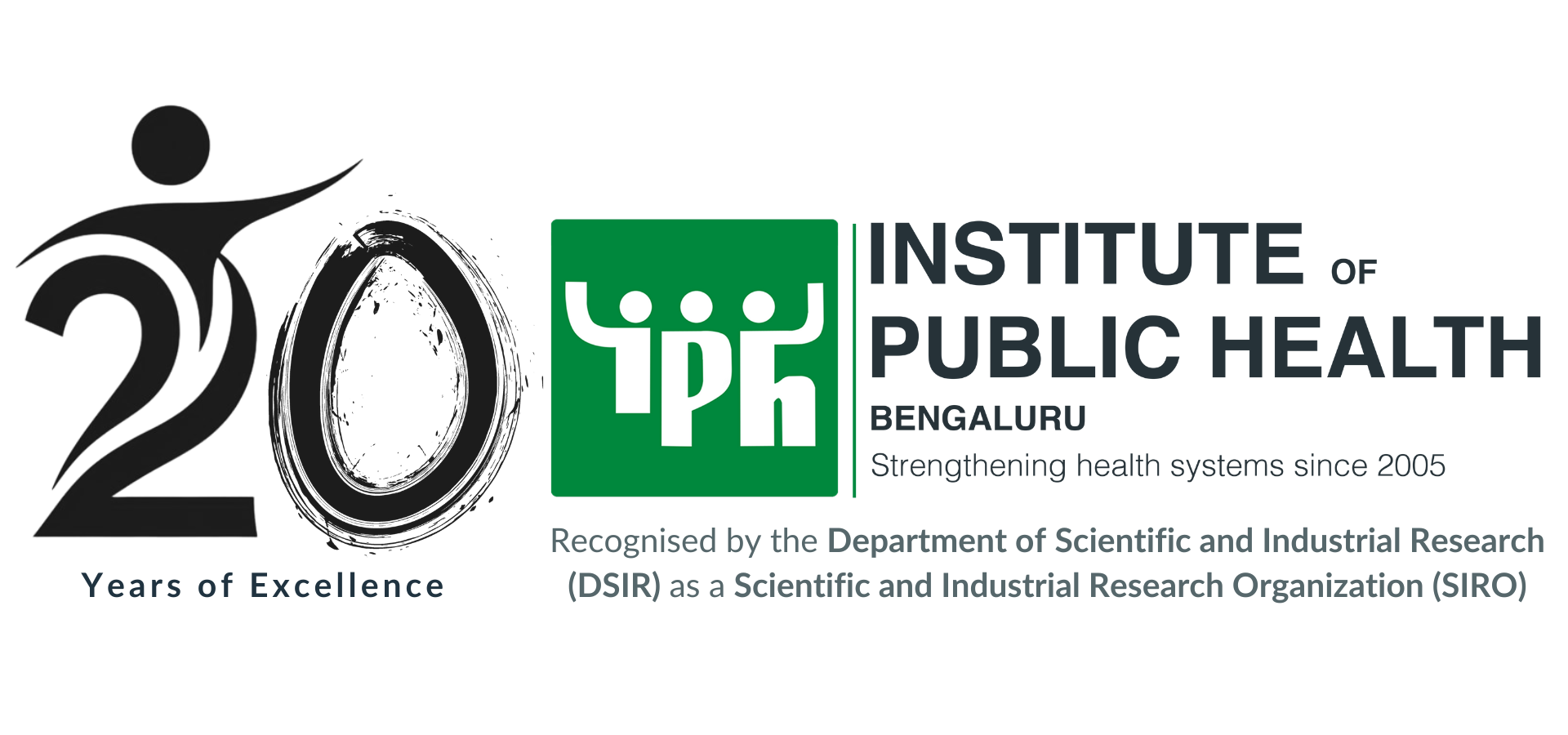


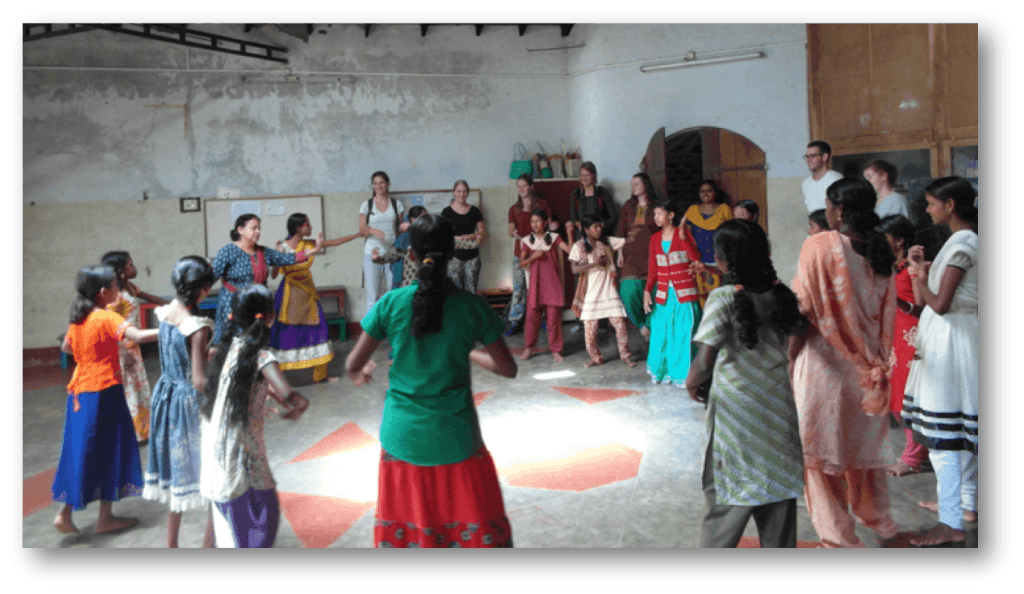
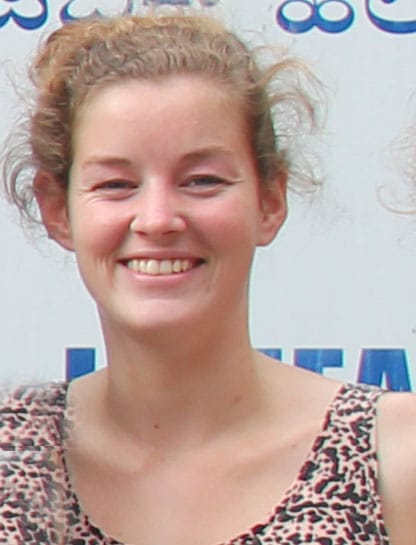 octors in both settings. Besides this, it was also hard for us to imagine why a lot of people visit the private sector instead of the public (which is for free).
octors in both settings. Besides this, it was also hard for us to imagine why a lot of people visit the private sector instead of the public (which is for free).
 In the time span from the 17th of August to the 28th August, we had the chance to see some of the institutions of the Indian health system and talk to some of the important stakeholders. In the subsequent informal report, I will review my experiences. The report will be rather opinion based than evidence based, so I am aware that some opinions might be too critical as they are mainly based on the impression I got in my two weeks visiting Indian health care facilities. The report is divided into two chapters, in which the first chapter describes my experiences and opinions about the first week and the second part is dedicated to the days spent in Gudalur.
In the time span from the 17th of August to the 28th August, we had the chance to see some of the institutions of the Indian health system and talk to some of the important stakeholders. In the subsequent informal report, I will review my experiences. The report will be rather opinion based than evidence based, so I am aware that some opinions might be too critical as they are mainly based on the impression I got in my two weeks visiting Indian health care facilities. The report is divided into two chapters, in which the first chapter describes my experiences and opinions about the first week and the second part is dedicated to the days spent in Gudalur.
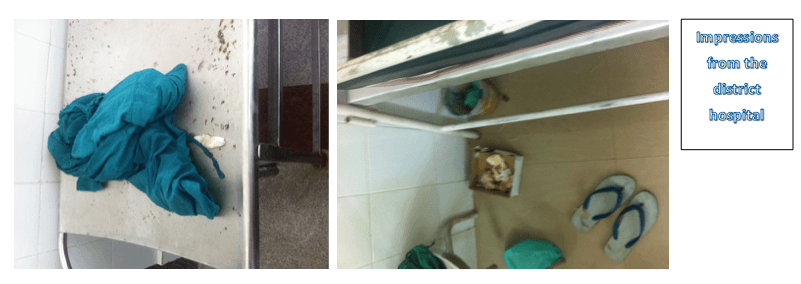
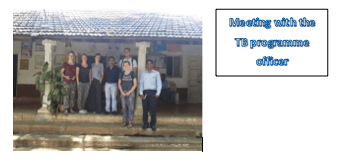
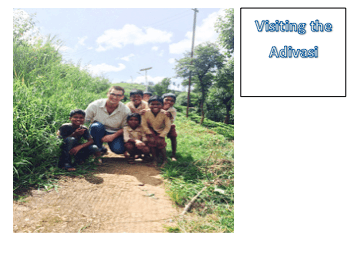

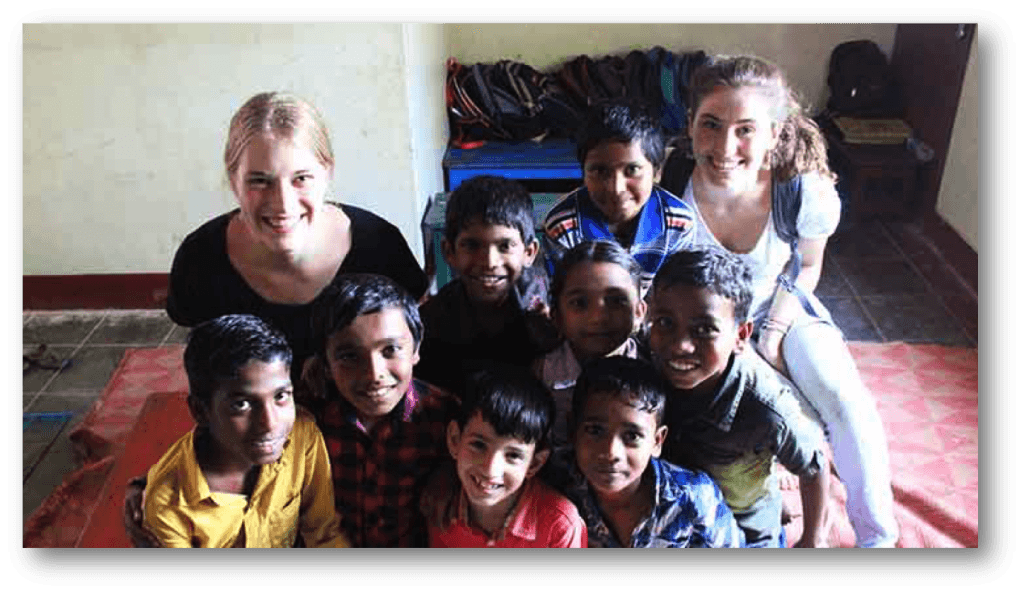
 Although we are already back in the Netherlands for one and a half week, I am still not totally used to it: Dutch food, no honking on the road and a lot of rain instead of the Indian sun. When people ask what the most impressive thing I have done was, it is difficult to choose between the many things we have done and we have learned. How can people really understand the culture and the Indian life, while they have not experienced it themselves? Watching back the pictures we have made while visiting the hospitals, the ASHA meeting, the tuberculosis centrum, the field visits and the Adivishi people, makes me realise that we were really blessed to have had this opportunity to see all those things. The most striking thing for me was the seeming discrepancy: on one hand the ‘hopelessness’ of the Indian healthcare, visible in the unhygienic operating theatres, the non-availability of doctors in the rural areas, and the lack of knowledge among the local population and on the other hand the hopefulness with the great opportunities that India is facing in among others the technology.
Although we are already back in the Netherlands for one and a half week, I am still not totally used to it: Dutch food, no honking on the road and a lot of rain instead of the Indian sun. When people ask what the most impressive thing I have done was, it is difficult to choose between the many things we have done and we have learned. How can people really understand the culture and the Indian life, while they have not experienced it themselves? Watching back the pictures we have made while visiting the hospitals, the ASHA meeting, the tuberculosis centrum, the field visits and the Adivishi people, makes me realise that we were really blessed to have had this opportunity to see all those things. The most striking thing for me was the seeming discrepancy: on one hand the ‘hopelessness’ of the Indian healthcare, visible in the unhygienic operating theatres, the non-availability of doctors in the rural areas, and the lack of knowledge among the local population and on the other hand the hopefulness with the great opportunities that India is facing in among others the technology.

